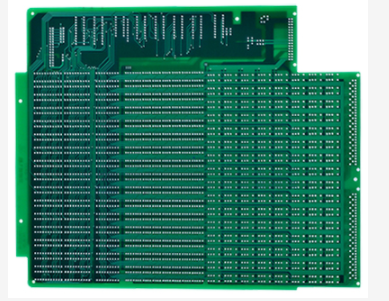What design principles should PCB circuit boards follow?
In today's highly developed technology, the upgrading of electronic products is getting faster and faster. Practice has proved that even if the circuit schematic design is correct and the printed circuit board is not properly designed, it will adversely affect the reliability of electronic equipment. So, what design principles should the PCB circuit board follow?
PCB circuit board design principles
1. Ground wire design
In electronic equipment, grounding is an important method to control interference. If the grounding and shielding can be properly combined and used, most of the interference problems can be solved. The following points should be paid attention to in the ground wire design:

(1) Correctly choose single-point grounding and multi-point grounding;
(2) Separate the digital circuit from the analog circuit;
(3) Thicken the ground wire as much as possible;
(4) Form the ground wire into a closed loop.
2. Electromagnetic compatibility design
The purpose of electromagnetic compatibility design is to enable electronic equipment to suppress all kinds of external interference, so that the electronic equipment can work normally in a specific electromagnetic environment, and at the same time to reduce the electromagnetic interference of the electronic equipment itself to other electronic equipment.
(1) Choose a reasonable wire width
The inductance of the printed wire is proportional to its length and inversely proportional to its width, so short and precise wires are beneficial to suppress interference.
(2) Adopt the correct wiring strategy
The use of equal routing can reduce the wire inductance, but the mutual inductance and distributed capacitance between the wires increase; if the layout permits, it is best to use a tic-tac-toe mesh wiring structure.
(3) Suppress reflection interference
In order to suppress the reflection interference that appears at the terminal of the printed line, in addition to special needs, the length of the printed line should be shortened as much as possible and a slow circuit should be used.
3. Decoupling capacitor configuration
In the DC power supply loop, the change of the load will cause the power supply noise. The configuration of decoupling capacitors can suppress noise caused by load changes.
4. The size of the printed circuit board and the configuration of the device
In terms of device layout, like other logic circuits, the devices related to each other should be placed as close as possible so that a better anti-noise effect can be obtained. Noise-prone devices, low-current circuits, and high-current circuits should be kept away from logic circuits as much as possible.
5. Thermal design
From the perspective of conducive to heat dissipation, it is best to install the printed plate upright, and the distance between the board and the board should generally not be less than 2cm. A lot of practical experience shows that the use of reasonable device arrangement can effectively reduce the temperature rise of the printed circuit.
The above are the design principles that PCB circuit boards should follow. How much do you know?(Circuit board factory)